Sign up for The Wild
We’ll help you find the best places to hike, bike and run, as well as the perfect silent spots for meditation and yoga.
You may occasionally receive promotional content from the Los Angeles Times.
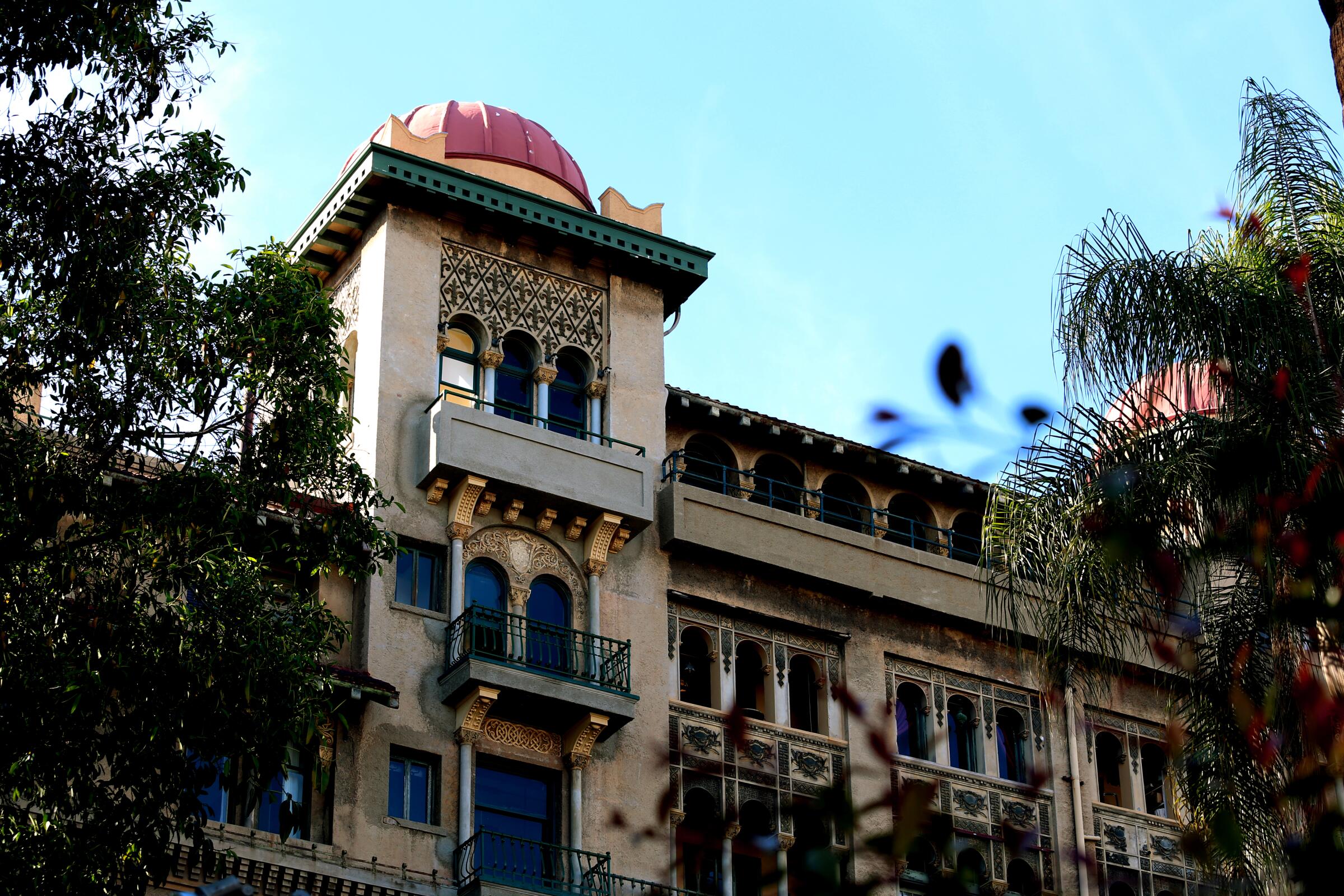
Mention Pasadena and most Americans picture the Rose Parade on New Year’s Day. They may not know the city also has some of the most beautifully preserved historic buildings in California.
In the late 19th and early 20th century, snowbirds from the East and Midwest vacationed in Pasadena for the winter. The balmy climate persuaded many to stay year-round. The wealthy built mansions designed by renowned architects such as brothers Charles and Henry Greene, Wallace Neff and Frank Lloyd Wright. A growing middle class and civic pride led to the construction of impressive municipal structures.
It’s fortunate that over the years concerned citizens and Pasadena Heritage, a nonprofit historic preservation group founded in 1977, have kept many of the city’s architectural treasures from the wrecking ball. Explore them with this easy-to-follow driving tour:
Start at Pasadena City Hall (100 N. Garfield Ave.). San Francisco architects John Bakewell Jr. and Arthur Brown Jr., who designed their hometown city hall, crowned this grand 1927 Beaux Arts building with a 206-foot-high dome. Across the street are large bronze sculptures of local heroes Jackie and Mack Robinson. Mack won the silver medal in track at the 1936 Berlin Olympics. His brother Jackie broke the color barrier in Major League Baseball in 1947.
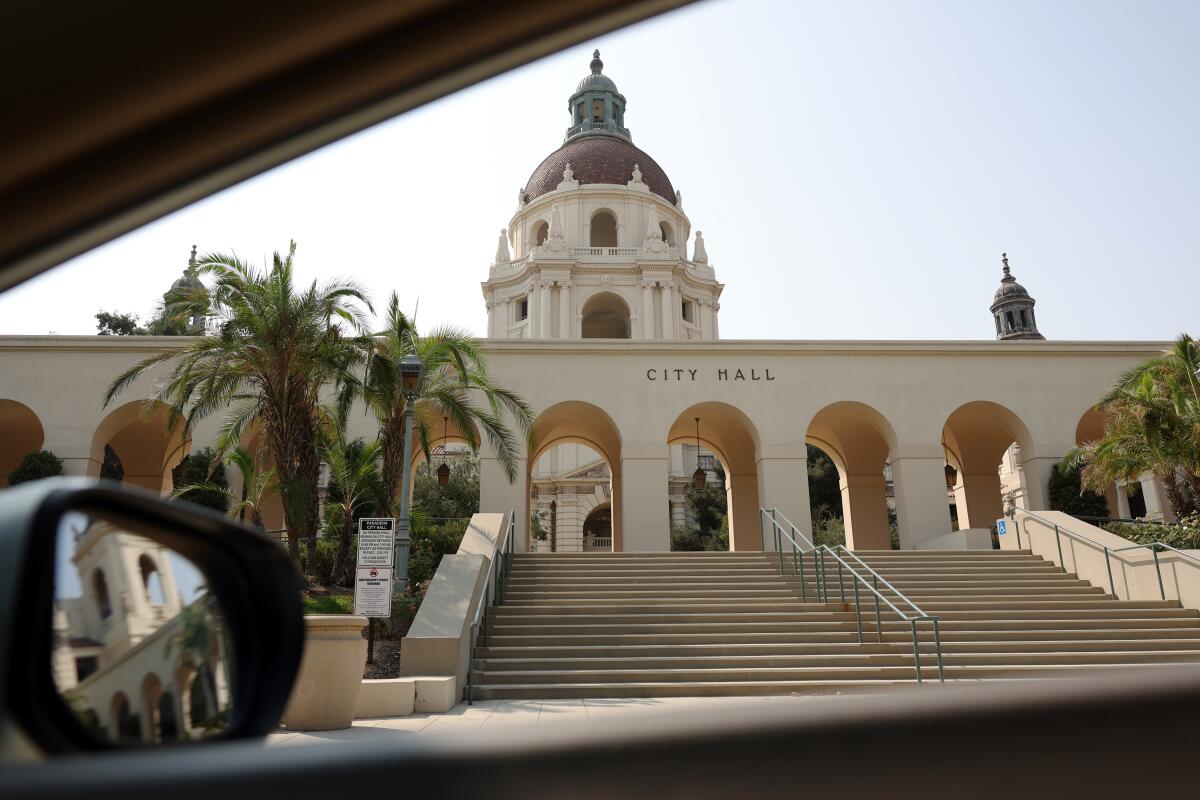
Drive north on Garfield to Walnut Street and the Pasadena Public Library (285 E. Walnut St.). The building was designed by local architect Myron Hunt, who also designed Henry Huntington’s home, now one of the art galleries at the Huntington Library, the Huntington Hotel (now the Langham) and the Rose Bowl.

Continue west on Walnut to South Raymond Avenue and turn left. Continue south and cross Green Street for a good look at Castle Green (99 S. Raymond Ave.). The imposing building was designed in 1898 by Frederick Roehrig with Moorish, Spanish and Victorian elements as an annex to the Hotel Green. Though today home to condos, Castle Green offers its restored public rooms for special events and occasional tours.
Continue on South Raymond to California Boulevard and turn left. Continue on California to El Molino Avenue and turn right. Drive south on El Molino, turn left on Alpine Street, right on Oak Knoll Avenue, then left on Hillcrest Avenue — and prepare to gasp. The 1907 Blacker House (1177 Hillcrest Ave.) was the most lavish Craftsman house designed by the Pasadena architectural firm Greene & Greene, stars of the American Arts and Crafts movement. The Greene brothers used teak, ebony, mahogany and other exotic woods throughout the house, every inch of which was custom designed for its lumber-baron owner.

Continue on Hillcrest to see other notable early 20th century mansions. Neff, who designed palaces for Charlie Chaplin, Cary Grant and other Hollywood royalty, built the 1925 Mediterranean beauty at 1290 Hillcrest Ave. The 1913 Freeman House (1330 Hillcrest Ave.) was designed by Alfred and Arthur Heineman, known as the “other brothers.”
The Huntington Hotel is set on 23 acres where Hillcrest ends at South Oak Knoll Avenue. Built in 1907, the hotel was purchased in 1911 by railroad magnate Henry Huntington (whose namesake art museum, library and botanical gardens are nearby) and redesigned by Myron Hunt. One of the grandest hotels in Southern California, it hosted the likes of Teddy Roosevelt and Albert Einstein. Today it’s the luxurious Langham Huntington.
Drive north on South Oak Knoll to Arden Road and turn right. Follow Arden as it curves to the left and ends at East California Boulevard. Turn left. Glimpse the Caltech campus on the north and south sides of the street. The 2009 Cahill Center for Astronomy and Astrophysics (1216 E. California Blvd.) embodies a fittingly futuristic design by L.A. architect Thom Mayne of Morphosis.
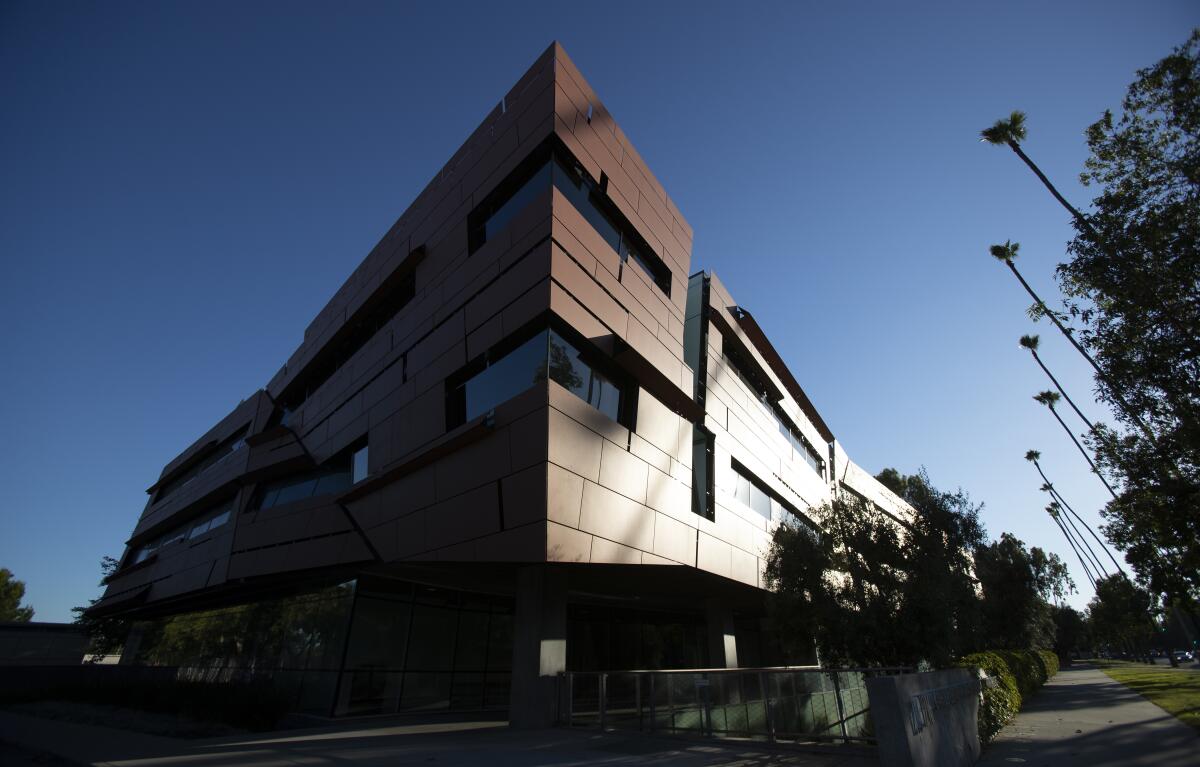
Continue on California to Los Robles Avenue and turn left. Drive four blocks to 1097 S. Los Robles. This Neff creation, on the corner of Wallis Street, is startlingly different from his mansions. The architect supposedly got the idea for an inexpensive solution to the global housing crisis from a soap bubble while he was shaving. The 1946 Airform “Bubble” House was built by inflating a giant balloon, covering it with chicken wire and spraying it with gunite. The design never caught on in the U.S., but a number of Airform structures were constructed in other parts of the world.
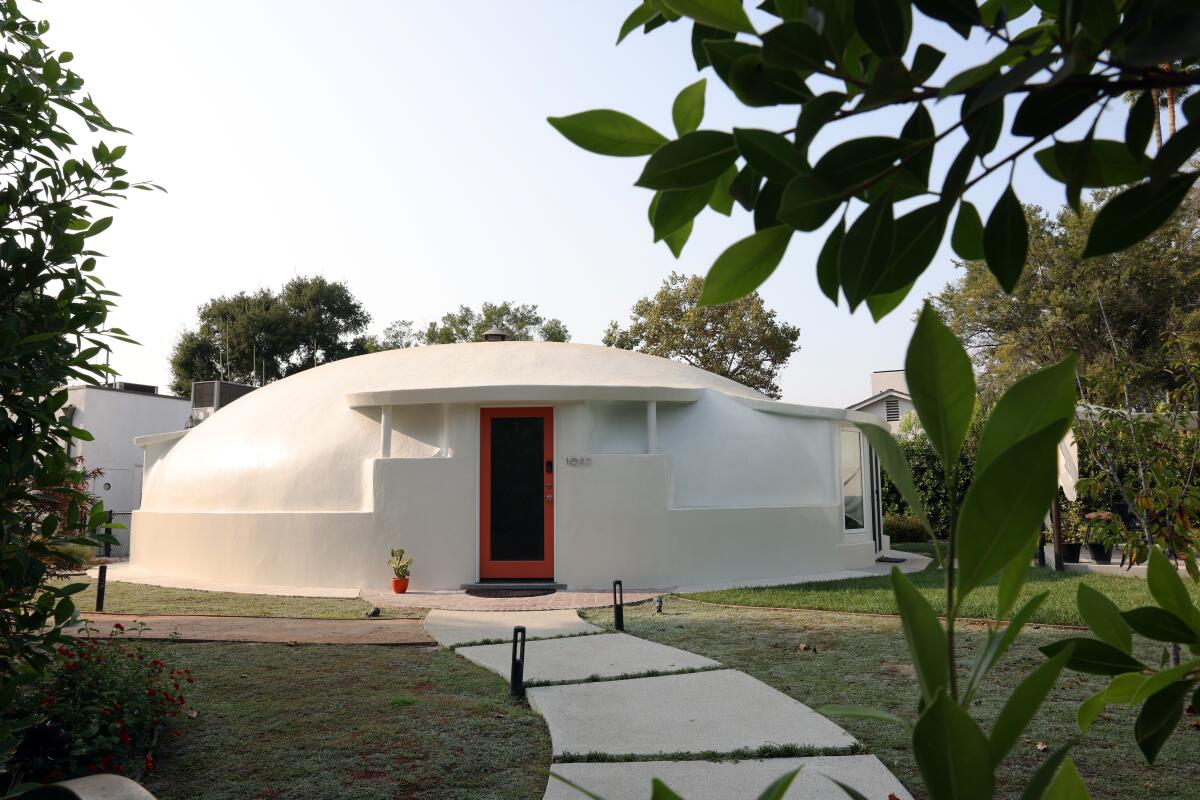
Continue on Wallis to Marengo Boulevard and turn right; drive north to East California Boulevard.
Turn left and continue on California about one mile to South Grand Avenue. Turn right. In the late 19th and early 20th centuries, the homes on South Grand were more modest than the opulent mansions on Orange Grove Boulevard, known as “Millionaire’s Row.” Note the variety of architectural styles and the use of river rock for retaining walls, chimneys and porches. The rocks were quarried in the nearby Arroyo Seco.
Turn right on Arbor Street and then right on Orange Grove to get a good look at the 1914 Italian Renaissance-style Wrigley Mansion. The 21-room residence was the home of chewing-gum king William Wrigley Jr. Today it’s the headquarters of the Tournament of Roses.

Drive one block south and turn right on Lockehaven Street, then right again on South Grand to 125 S. Grand. In its heyday this towering Spanish Colonial Revival-style building was the glamorous Vista del Arroyo Hotel. It was converted into an Army hospital during World War II and now is home to the U.S. Court of Appeals for the 9th Circuit.
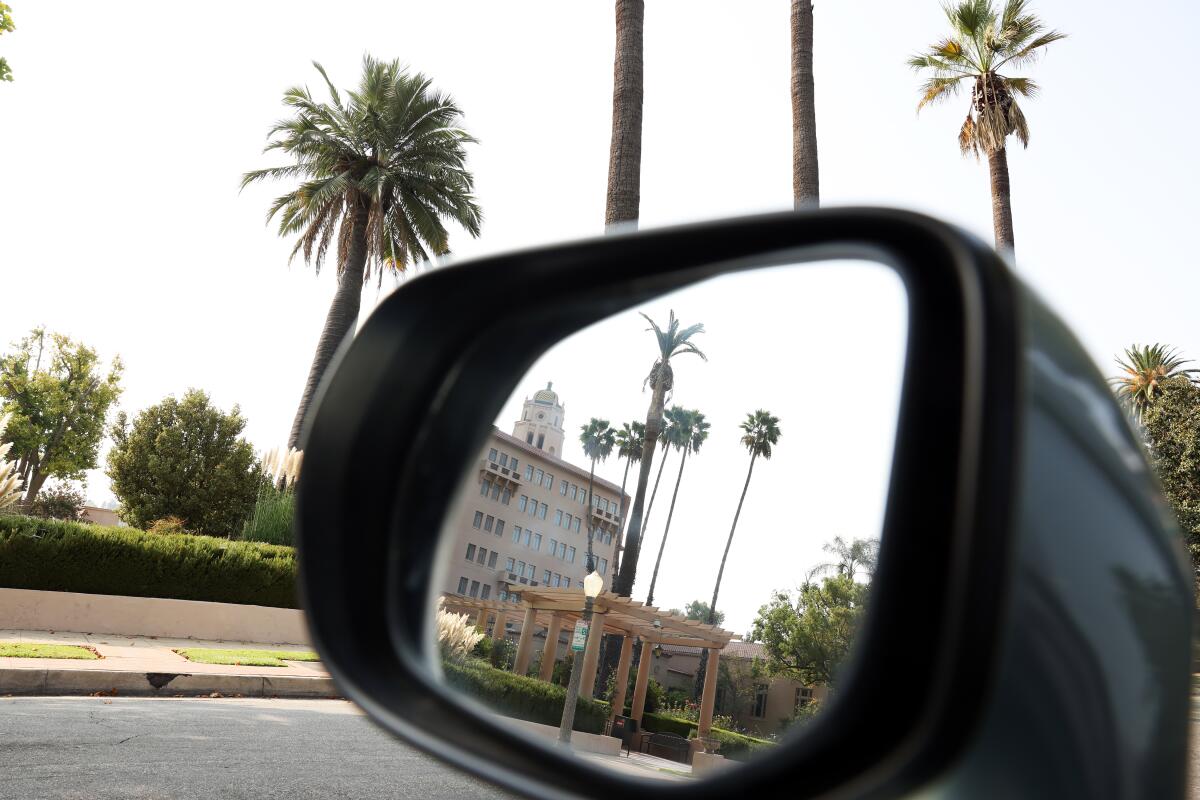
Turn right on Green street, then left on Orange Grove Boulevard. Cross the 134 Freeway, make an immediate left turn on Holly Street, then right on North Grand Avenue to continue your peek into the city’s past. The 1905 Craftsman bungalow at 200 N. Grand was architect Myron Hunt’s home.
Greene & Greene expanded a small existing cottage into the Duncan-Irwin House (240 N. Grand Ave.), its broad, gently sloping roofs and overhanging eaves an example of their early Arts and Crafts style. Note the gnarled old wisteria vines climbing up the entryway pergola.
Turn right onto Arroyo Terrace, then left on Scott Place. Turn left at Rosemont Avenue, then right on Prospect Terrace to Prospect Boulevard. The Prospect Park neighborhood, its narrow streets shaded by majestic camphor trees, features middle-class homes by eminent early 20th century architects. The 1906 Louise Bentz House (657 Prospect Blvd.), a Greene & Greene design, elicits comparisons to a Swiss chalet.
Turn right onto Prospect Crescent to catch a glimpse of the only Frank Lloyd Wright house in Pasadena. The 1923 Millard House (645 Prospect Crescent) was built on the edge of a wooded ravine for rare-book dealers George and Alice Millard. Wright’s design was experimental: textured cement blocks made with sand and gravel found on the property.

Continue on Prospect Crescent to Prospect Boulevard. Turn right onto Orange Grove Boulevard. One block ahead is the tour’s final destination: the best-preserved example of Greene & Greene Arts and Crafts architecture. The brothers Greene designed the 1908 Gamble House (4 Westmoreland Place) for David Gamble of Proctor & Gamble Co., customizing it down to the furniture, light fixtures and carpets. The Gamble family recognized the artistic and historic importance of the house and deeded it in 1966 to the city of Pasadena and the USC School of Architecture. The house, designated a National Historic Landmark in 1978, is now operated by the Gamble House Conservancy. Docents lead small, safe-distancing tours of the exterior and garden ($15) Thursdays through Sundays, and Saturday neighborhood walking tours ($17) by advance reservation.

For more information: pasadenaheritage.org
Sign up for The Wild
We’ll help you find the best places to hike, bike and run, as well as the perfect silent spots for meditation and yoga.
You may occasionally receive promotional content from the Los Angeles Times.